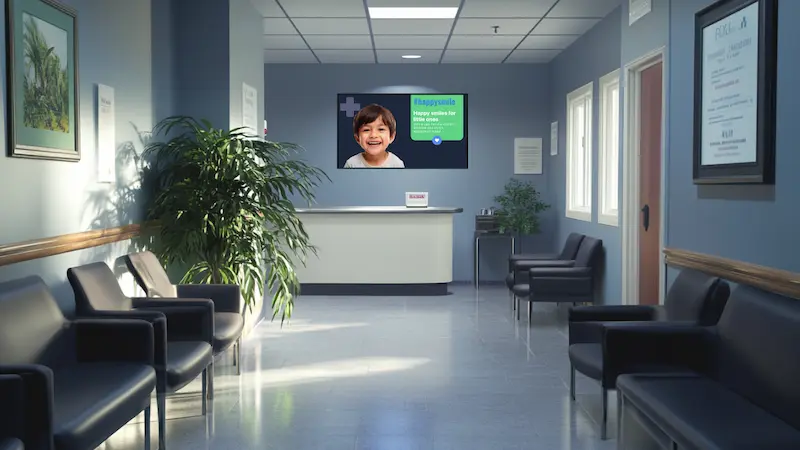
Table of Content
The quality of healthcare provision today isn’t what it used to be a couple of decades ago. A lot has changed, and we have technology to thank for that. Healthcare systems and hospitals are investing millions into enhanced technology for cybersecurity, data analytics, telehealth, and other essential technologies in health tech. These endeavors aim to raise the standard of healthcare services.
Let’s look at healthcare technology examples that shape how we experience medical care today.
Introduction to Healthcare's Technological Frontier
Hospitals in the 20th century were often criticized for their hostile and dehumanizing nature, showing a lack of consideration for the patient's well-being and healing. Fast forward to modern healthcare, the industry is taking a holistic approach to making medical provision a joy for patients, families, and staff.
The ongoing integration of technology in healthcare promises better patient care, smoother processes, and improved outcomes. Artificial intelligence, telemedicine, wearables, and data analytics are changing healthcare delivery, making it more accessible, efficient, and tailored to individual needs. As the industry adopts these innovations, there's a growing potential for improved diagnostics, treatment, and preventive care.
Let’s look at these healthcare technological examples in detail.
1. Artificial Intelligence in Diagnostics
Artificial Intelligence (AI) is proving itself indispensable in medical diagnostics. The main goal of diagnostics is to find out the root cause of a health problem and give the correct diagnosis for effective treatment. AI makes diagnostic predictions more accurate, faster, and more efficient.
AI algorithms can quickly analyze medical images like X-rays, MRIs, ultrasounds, CT scans, and DXAs. It helps doctors identify diseases faster and more accurately. AI can also handle patient data, including images, bio-signals, vital signs, demographics, medical history, and lab results. This analysis helps doctors make better decisions for improved patient care.
We all know that self-diagnosis can be a real rabbit hole, especially with conflicting Google findings. A team in Harvard founded Bouy Health to make self-diagnosis easier with AI. Users provide information about their medical history, symptoms, and other relevant information. The platform then provides a probable diagnosis in real-time.
2. Telehealth: Bridging Gaps in Remote Patient Care

Telehealth offers a means of connecting patients with healthcare providers online rather than through in-person visits to medical offices. It can be through devices such as computers, tablets, or smartphones, with the latter being a significant player in mobile health (mHealth).
mHealth application enables individuals to monitor their health, set reminders for medications and appointments, and engage in virtual consultations via video calls or messaging.
Telehealth also involves the remote monitoring of health parameters at home. Various devices can assess metrics such as blood pressure and transmit this data to healthcare professionals. It proves particularly beneficial in managing chronic conditions like diabetes in the comfort of one’s home.
3. Wearable Health Tech: Personalized Monitoring and Insights
Wearable health tech has become a game-changer by offering detailed health insights at our fingertips. Around 30% of US adults use these devices, and almost half use them daily, with over 80% willing to share their health data with their doctors. These wearables provide handy ways to monitor, store, and share health information in real-time. They also give feedback for making healthy lifestyle changes.
Wearables enable doctors to remotely monitor patients, resulting in improved health and fewer medical appointments. They are particularly beneficial for individuals with persistent health issues, those who are at risk of heart disease, and the aged population. Wearables are easy to use, non-invasive, and seamlessly fit into our daily lives, making them a powerful tool for improving healthcare and cutting down on costs.
The most common wearable devices in healthcare include:
- Fitness Trackers
- Smartwatches
- Health Monitoring Bands
- Wearable ECG Monitors
- Blood Glucose Monitors
4. Blockchain in Healthcare: Securing Patient Data

Traditional healthcare databases were vulnerable to security breaches, which led to the leakage of sensitive patient information. Blockchain, however, operates as a decentralized network and transforms how healthcare institutions store and exchange data.
Blockchain identifies errors in medical records and enhances the overall system performance, security, and transparency in sharing medical data. The adoption of a distributed ledger approach ensures there’s data integrity. It makes records immutable once added to the chain—there has to be a consensus from the entire network for any changes.
BurstIQ is a Denver-based company that enables data management with blockchain solutions for healthcare institutions. Machine learning and big data, among other technologies, facilitate the secure sharing of information and improve operational efficiency.
5. Digital Signage: A Dynamic Communication Tool in Healthcare
Digital signage has been a driving factor in transforming hospitals into more welcoming spaces. When placed strategically in waiting rooms and lobbies, digital displays efficiently share important messages, such as health alerts and safety guidelines, to ensure everyone stays informed. This real-time engagement expands the reach of information, creating a knowledgeable healthcare environment for patients, visitors, and staff.
Digital signage in healthcare institutions is invaluable for patient education. It provides engaging content like videos and infographics to explain medical procedures, medications, and post-treatment care. This approach uses visuals to capture attention, improve patient understanding, encourage adherence, and lead to better health outcomes.
6. Robotics and Automation in Surgical Procedures
By 2030, there will be a global shortage of 15 million health workers, according to experts. While healthcare remains fundamentally people-driven, technology can assist health professionals in providing higher-quality care.
Medical professionals can now conduct surgical procedures with better precision, flexibility, and control with the help of Robotic-Assisted Surgery. RAS is typically associated with minimally invasive surgery(MIS), which includes smaller incisions and is less invasive. The benefits of MIS include reduced blood loss, minimized scarring, lower infection risks, and a quicker return to routine.
Robots are tireless and precise, capable of performing complex surgical procedures previously thought impossible.
7. AR and VR for Medical Training and Education
The use of Augmented Reality (AR) in medical training and education has a focus on efficiency. AR combines visual learning with text to create an immersive learning environment that boosts student engagement and understanding.
It also facilitates remote training through everyday devices such as smartphones. Unlike virtual reality, AR is more practical as it doesn't require specialized equipment. It means medical trainees can practice with near-realistic simulations of intricate medical scenarios.
A good example is how the Johns Hopkins School of Nursing uses VR across different nursing levels to elaborate critical scenarios for students. These scenarios include resuscitation, anaphylactic reactions, and acute-care management. The VR setup features Oculus headsets and Dell Technologies’ Alienware computers.
In terms of cost-effectiveness, AR is a wise investment that reduces dependence on traditional resources like anatomy theaters.
Key Takeaways
- Modern healthcare prioritizes holistic patient well-being and integrates technology for better care, processes, and outcomes.
- Artificial Intelligence improves diagnostic accuracy, speed, and efficiency by analyzing medical images and patient data.
- Telehealth connects patients with providers online, enabling digital consultations and remote monitoring for chronic conditions.
- Wearable devices offer personalized health monitoring, reduce doctor visits, and improve outcomes, especially for remote patient care.
- Blockchain ensures high-level security and trust in healthcare data storage and exchange, addressing vulnerabilities in traditional databases.
- Digital displays enhance patient education and communication in healthcare institutions by providing real-time information in waiting areas.
- Automation in surgical procedures aids health professionals by minimizing invasiveness, reducing recovery times, and addressing the anticipated shortage of health workers.
- Augmented Reality transforms medical education through immersive learning environments, remote training, and cost-effective alternatives to traditional resources.







